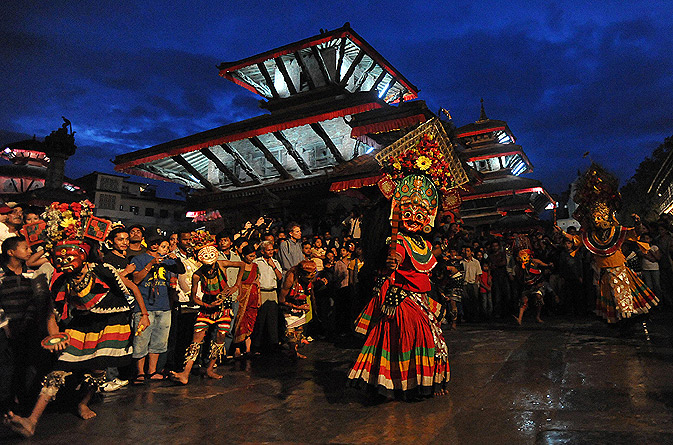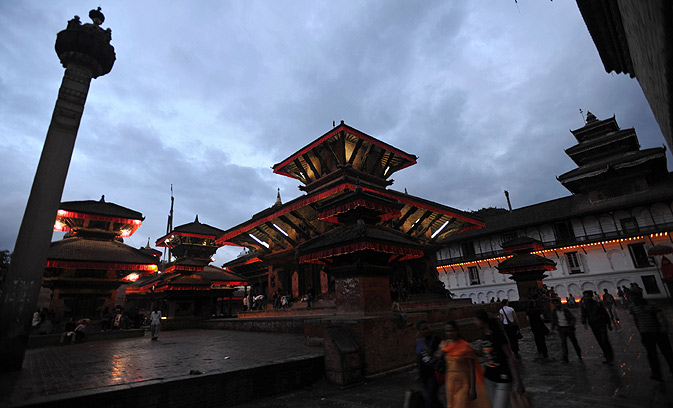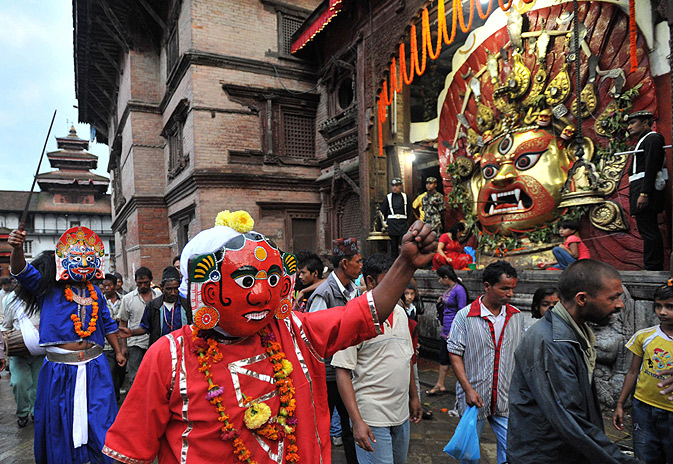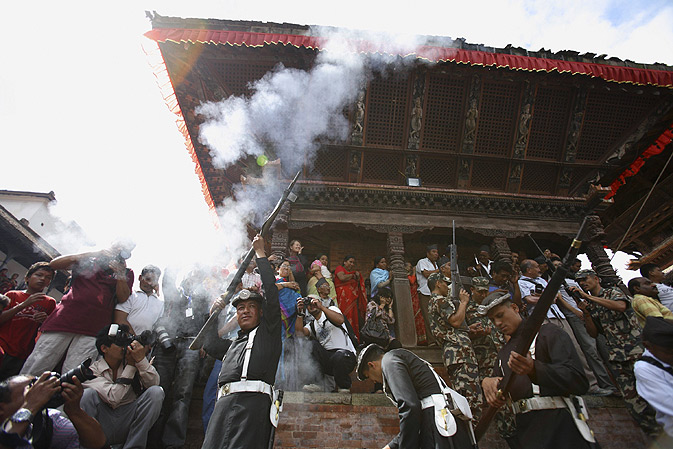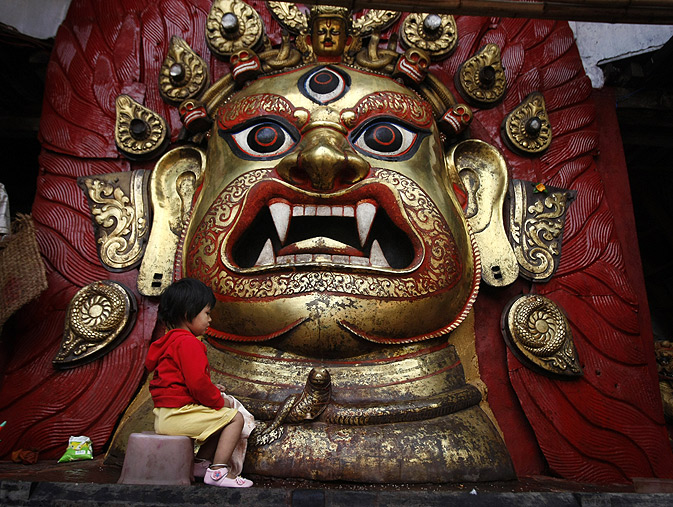Very rare video footage of Nepalis celebrating Indra Jatra festival, biggest street festival of Nepal, with much rejoice, singing, dancing and chariot procession in Kathmandu.
Date: 1931 (Before the great earthquake of 1934. Hence the video has very important visuals that displays the spectacular Kathmandu Durbar Square before the disaster)
[Credit: British Library - Sound and Moving Image Collections | The British Library has made these recording available purely for the purposes of non-commercial research, study and private enjoyment.]
Indra Jatra
(Yenyā in Nepal Bhasa: येँयाः)
It is the biggest religious, cultural and historic street festival of Nepal, particularly within the Kathmandu valley and mainly observed by Newar community. Yenya means "Kathmandu festival" in Nepal Bhasa. It is the time when the advent of the monsoons is celebrated in the name of the rain god 'Indra'.
The eight days long celebrations consist of two events. Indra Jatra is marked by masked dances of deities and demons (commonly known as Lakhe Naach, Mahakali Naach, Lusiki Naach and Dash Avatar), displays of sacred images and tableaus in honor of the Hindu deity Indra, the king of heaven. The other event is Kumari Jatra, the chariot procession of the Living Goddess Kumari. Three chariots carrying human representations of Goddess Kumari, Lord Ganesh and Lord Bhairava are pulled along the festival route through Kathmandu Durbar Square. Classical dancers, mask dancers of deities wearing different kinds of traditional masks and costumes and musicians also accompany the chariot procession. The dancing continues throughout the route to celebrate the visit of the rain god, Indra. The procession starts at around 3 pm.
Indra Jatra was started by King Gunakamadeva to commemorate the establishment of the city of Kathmandu in the 10th century. Kumari Jatra, which means the chariot festival of Kumari, coincides with Indra Jatra. It was started in 1756 AD during the reign of Malla King Jaya Prakash Malla.
Family members deceased in the past year are also remembered during the festival. The main venue of the festivities is Kathmandu Durbar Square. The celebrations last for eight days. There is a public holiday in Kathmandu Valley to mark the festival. Indra Jatra also marks the beginning of the festive season, which is preceded by major festivals Dashain and Tihar.
Kumari Jātrā
On the first day known as Kwaneyā (क्वनेया:), the chariots are pulled through the southern part of town. On the second day known as Thaneyā (थनेया:), the chariots are drawn through the northern part till Asan. And on the third day Nānichāyā (नानिचाया:), the procession passes through the central section at Kilāgal. The chariot procession was started in the mid-18th century during the reign of Jaya Prakash Malla.
Route on Day 1: Basantapur, Maru, Chikanmugal, Jaisidewal, Lagan, Hyumat, Bhimsensthan, Maru, Basantapur.
Route on Day 2: Basantapur, Pyaphal, Yatkha, Nyata, Tengal, Nhyokha, Nhaikan Tol, Asan, Kel Tol, Indra Chok, Makhan, Basantapur.
Route on Day 3: Basantapur, Pyaphal, Yatkha, Nyata, Kilagal, Bhedasing, Indra Chok, Makhan, Basantapur.
Ancient Legend
According to an ancient legend, the young Indra, disguised as a farmer, descended to earth in search of Parijat, a white flower, his mother, Dakini, needed to perform a ritual. He found the Parijat, but was caught while trying to take the flower by the owner of the meadow where he found the flowers. He was bound and imprisoned in Kathmandu until his mother, worried about his extended absence, came looking for him. When the city folk realized who they had imprisoned, they agreed to release Indra but on the condition that he would return to the earth every year during that time and be displayed as a prisoner for 7 days and that he would provide enough rain (dew during winter) for the crops. So, during this festival, images of Lord Indra are displayed for 7 days, but in captivity. Dakini promises enough dew throughout the winter to ensure a rich crop and to take back with her to heaven all those who had died in the past year.
The Indra Jatra festival thus honours the recently deceased and pays homage to Indra and Dakini for the coming harvests.


